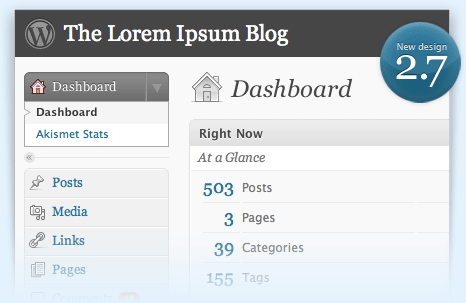One of the biggest issues for new websites and blogs is “when do I appear online for searches using my domain name, my business name, or my keyword phrases”.
My answers are based on years of experience of watching, helping, advising, and doing. Here are a few answers to a few of these questions that new website and blog owners really want answered.
First, there is simply no way to know for sure when your new website or blog will appear in the all important Google search index. One thing that I do know for sure is that until you have several popular websites or blogs pointing to your site, you will not appear in the search index. This is where doing articles for syndication, posting comments on forums and blogs that do not install “nofollow” in their tags, and doing a press release will help Google to discover your new website or new blog. No one can force Google to do anything and that is particularly important when it comes to being included in their search index.
Additionally I have seen some brand new websites fall into the Google Sandbox and not appear for up to six months in the search index for hot property terms – real estate sometimes falls into this category. The Sandbox topic is a controversial one, but I have actually tracked it and seen www.Homes-Database.com be impacted by it when we initially launched the website. Another website we are watching carefully is a new Quick Launch prefab web template site that we launched last week for www.MoussaMoaadel.com for Moussa Moaadel Realtors. I am not sure that Google will delay indexing this site as they did with www.Homes-Database.com, but I do know that it has not yet appeared in the Google index even under its domain name but has appeared rapidly in the MSN Live index.
Another site that we are watching carefully is www.AmericanBoom.com. We are blogging for the site at www.AmericanBoom.con/blog and it is troubling as to why the main website and even blog still do not appear in the Google Search index. As we identify additional answers for that particular blog and website, we’ll keep you posted, but for now know that visibility for a new site is crucial.
So what can you personally do to help the search engines find you? Well, there are some things that you should for sure consider doing while you are waiting for the search indexes to grab your new site.
1. Make sure to do a Google sitemap in .xml and load it into the Google Webmaster control panel.
2. Make sure to verify your site in the Google Webmaster control panel. If you don’t verify you do not get the benefit of the diagnostic tools that Google provides to help you understand any issues. If when you verify you get an error message, work quickly to correct it. One site that we recently tried to verify generated a 500 internal server error. If the Google Webmaster control panel has an error validating your site, the Google robot will most likely run into other issues.
3. Do not work over your server to defeat searches using www. or just http://. If you feel that you absolutely must control how a spider indexes your site, add it into the Google Webmaster control panel. Do not set this up at the server level. One issue that we have uncovered for one client is that they site is visible for http://newdomainname.com but not at www.newdomainname.com. It appears that the programmer has altered some server setting which has caused issues for Google visibility. To check to see if your site is visible for these queries, go to www.Google.com and enter this as your search: site:www.mydomainname.com and then later site:http://mydomainname.com – note the no www and http:// additions.
4. Lastly do not have your home page of your website done in all images or Flash. You are setting yourself up for major visibility issues when you design a new website or blog in this manner. Search engine spiders review text, they cannot read images or Flash. If you do not have the web visibility that you think that you should, then the very first place to look is your home page. The home page of your website is crucial to your website’s visibility. It carries more weight with search engines than any other page on your website. For that matter if your site is dynamic in nature, you still should have a home page residing in the root directory. We recently evaluated a site where no home page existed. How can a search engine robot index the site if the page that the search engine considers the most important does not even exist on the server in the root directory?
From experience I have found that not all programmers and not all web designers understand the nuances of search engines. If your website is not showing now’s the time to check out these simple things to find out why and to realistically identify what you can do to correct them, and to identiry if they are correctable.


